During the early spring, I had the pleasure of viewing not one, but two male yellow-rumped warblers at my feeders. Although yellow-rumped warblers mainly consume insects and berries, these birds will often visit bird feeders. This type of behavior primarily occurs due to the limited availability of these food sources during the early spring. I found although these two males were curious enough to investigate the birdseed, they favored the variety of suet I offer my visiting birds. As time moved on during the season, these birds were primarily feeding on insects. They were no longer coming to feed on the suet. It was quite entertaining to watch these birds flying from the trees to catch insects in midair and observe their swallow-like flying and hunting skills over the surface of the water. With all of the rain, we have been getting this spring, there are a variety of insects available for insect-eating birds. Especially, everyone’s favorite pesky insect…the mosquito! I will explain the feeding habits of this interesting bird further on in this post. I would also like to share a few interesting facts about the yellow-throated warbler as well as a few photographs.
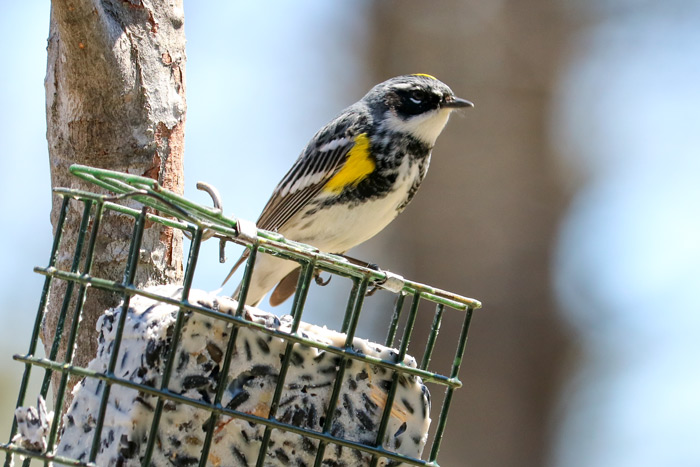
A male yellow-rumped warbler visiting a suet feeder.
Yellow-rumped Warbler Identification
The yellow-rumped warbler Setophaga coronata is a North American bird that has two distinct subspecies. These two subspecies used to be considered separate species. The “Myrtle” warbler can be found in the eastern United States and the boreal forest of Canada. Its western counterpart, the “Audubon’s” warbler can be found in the mountainous West. A combination of the two species may occur in overlapping areas such as the Canadian Rockies.
Description of the Yellow-rumped Warbler
Yellow-rumped Warblers are fairly large in size. They are full-bodied with a large head, sturdy bill, and have long, narrow tails. During the summer, both sexes are gray in color with flashes of white in the wings. They also have yellow on their faces, sides, and rumps. These yellow rumps have given these species of birds the amusing nickname of “butterbutt” among birdwatcher communities. Winter yellow-throated warblers have a lighter plumage consisting of a paler brown, with a bright yellow rump and usually some yellow on the sides.
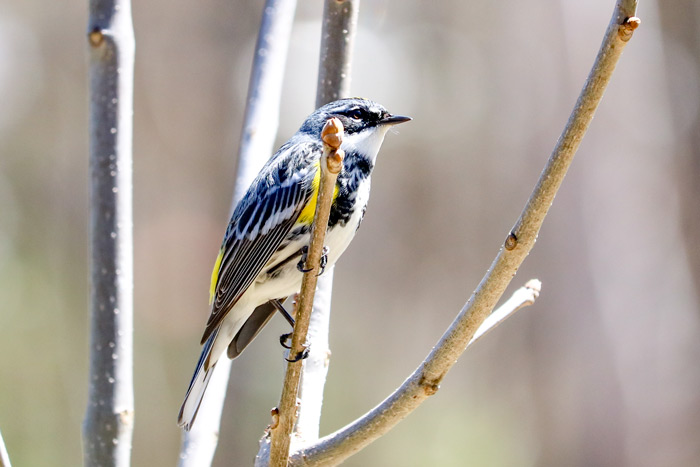
Males are more vibrant in color.
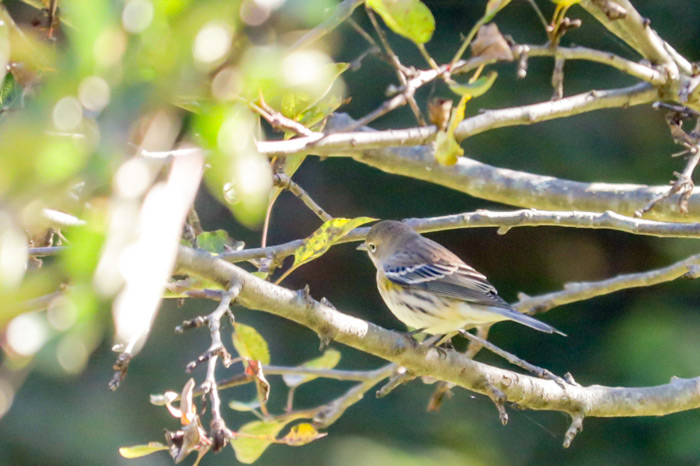
Females are much duller and are browner in color.
Yellow-rumped Warbler Song
The song of the yellow-rumped warbler is a loose, junco-type trill. The pitch is even, but rises or drops and speeds up toward the end. The song will last one to three seconds and consists of up to twenty-one individual notes.
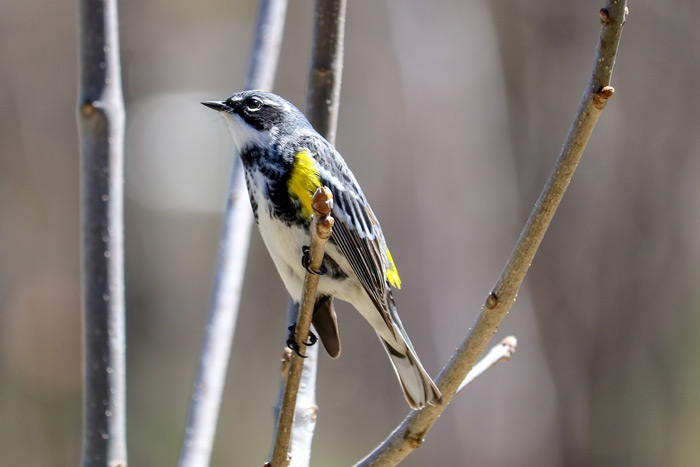
Yellow-rumped Warbler Call
Yellow-rumped warblers have two main calls. First, a loud check sound. Both sexes make this call frequently, both while foraging and while flying. These birds also make a soft psit and a high tsee while in flight.
Yellow-rumped Warbler Feeding Behavior & Diet
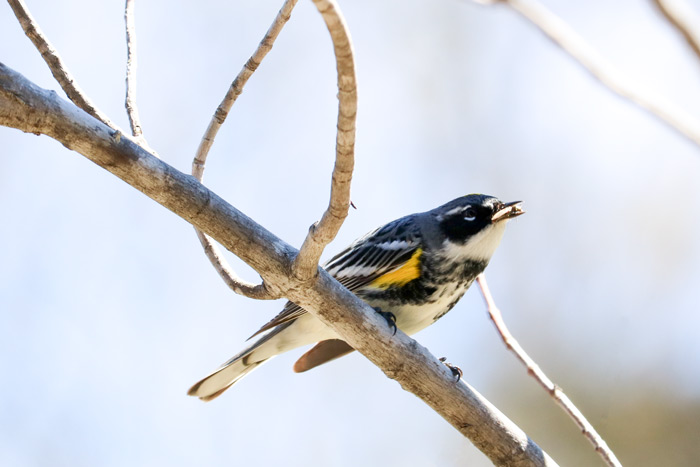
The diet of the yellow-rumped warbler consists of insects and berries. This includes caterpillars, wasps, grasshoppers, gnats, aphids, beetles, spiders as well as many other insects. In the winter they also consume fruits and berries such as bayberry, juniper, wax myrtle, poison ivy, greenbrier, grapes, Virginia creeper, and dogwood as well as many others. They will also come to feeders, where they will consume sunflower seeds, raisins, peanut butter, and suet.
The yellow-rumped warbler will search among leaves and twigs for insects as well as hover around and take insects from foliage. The males tend to forage higher than females during the breeding season. Feeding also takes place on the ground and while they cling to tree trunks and branches. You can also often observe them catching insects in midair. During the winter, these birds will forage in flocks. At this time of year, they spend their time eating berries from shrubs and they will often travel in large flocks. This allows them to winter farther up north than most other warbler species because they can easily digest the wax in berry coatings.
Yellow-rumped Warbler Breeding & Nesting
Yellow-rumped warblers spend the breeding season in mature coniferous and mixed coniferous-deciduous woodlands such as in patches of aspen, birch, or willow. During the courtship period, the male will remain with the female. Nests are constructed by the female and take ten days to build. The nest is built on a horizontal branch away from the trunk. It is located four to fifty feet above ground sometimes in deciduous trees, where the branch and trunk meet. Nests are open cups made up of bark fibers, weeds, twigs, and roots and lined with hair and feathers. The construction allows for the nest to curve over in order to partly cover the eggs.
There are typically four to five eggs that are creamy white in color with brown and gray speckles. The eggs are incubated by the female and occasionally by the male. Both parents feed nestlings. Young will leave the nest in ten to twelve days and fly two to three days later. Yellow-rumped warblers will normally produce two broods a year.
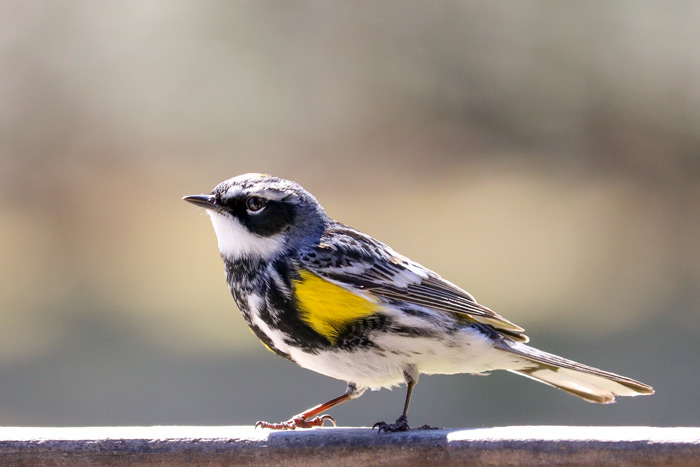
Yellow-rumped Warbler Migration
The yellow-rumped warbler is a short to long-distance migrant. There are some birds that move to the nearby Pacific Coast for the winter months. Other populations of these birds will migrate to winter grounds in Mexico and throughout Central America.
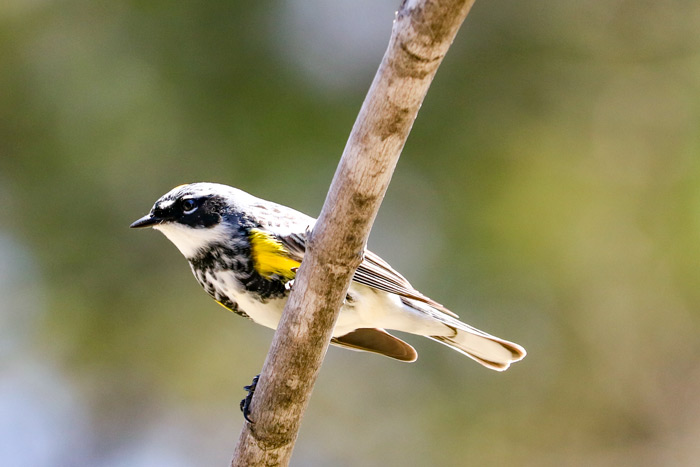
Thank you for reading about the yellow-rumped warbler or “butterbutts” to we birders. I hope you enjoyed and Happy Summer!
Resources used for this post:
allaboutbirds.org & audubon.org
Leave a Reply